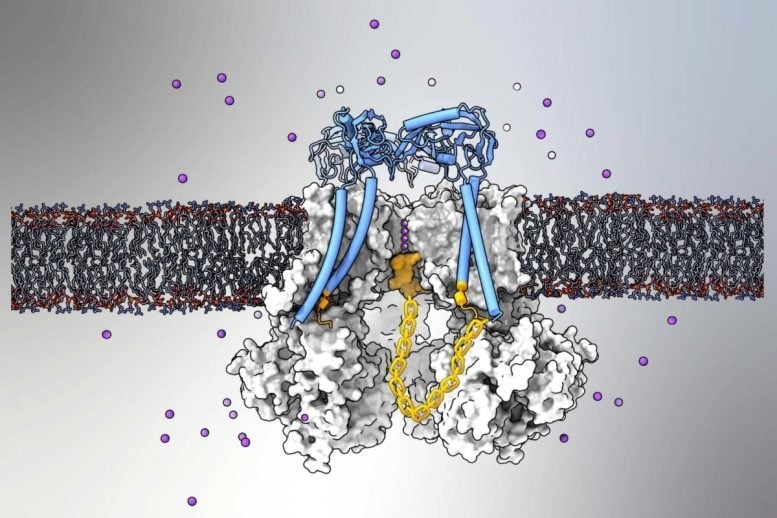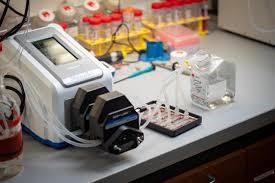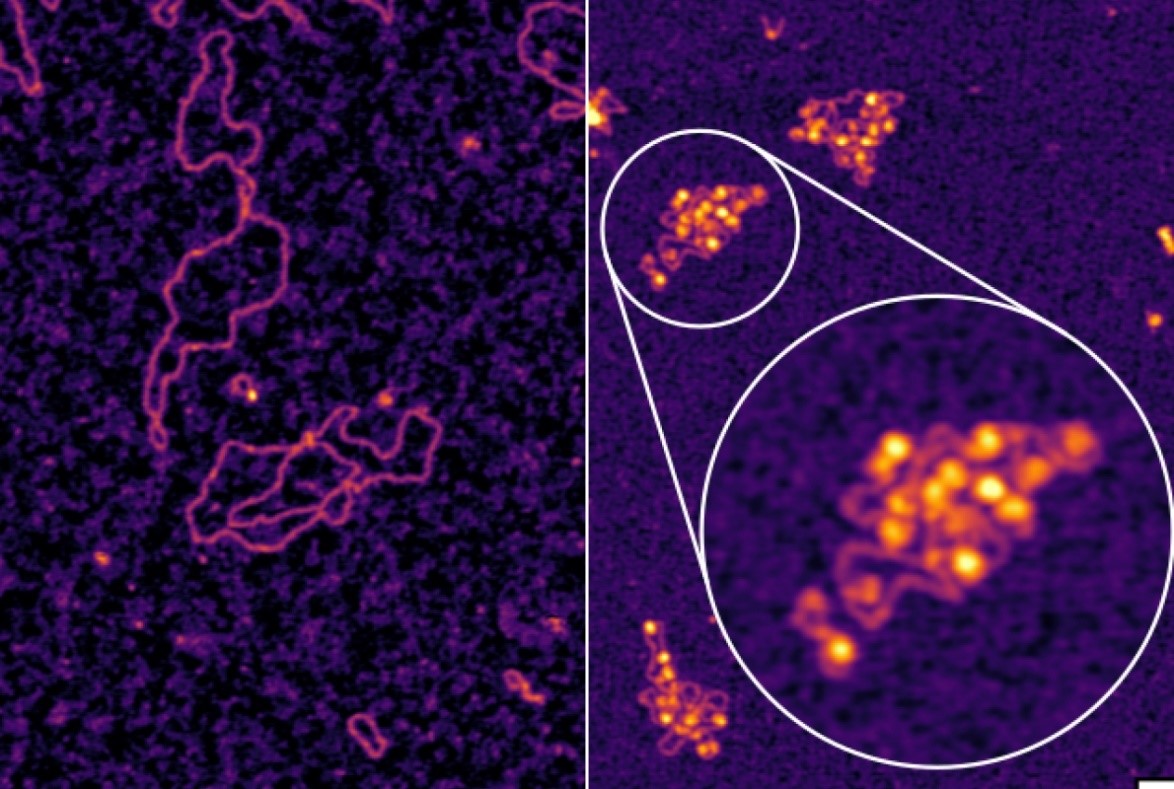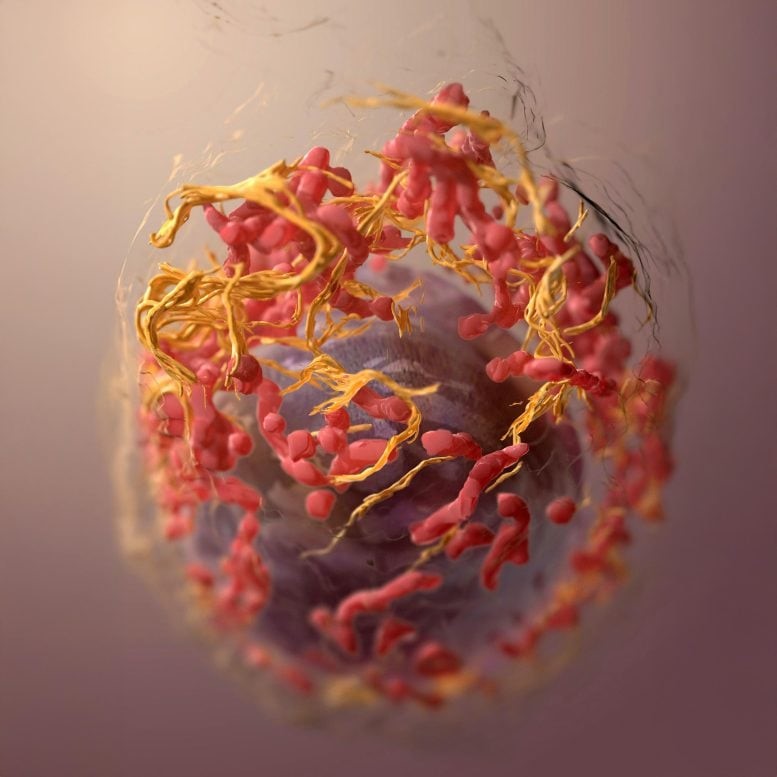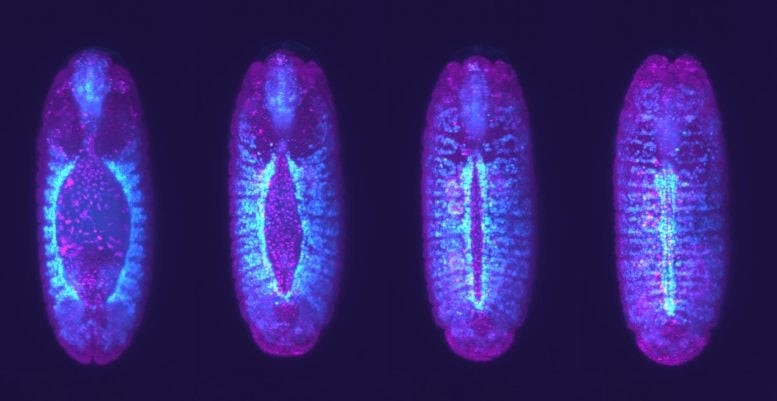Microscopic Warfare: Bacteria Use Tiny Spearguns for Defense
In the microbial world, peaceful coexistence goes hand in hand with intense competition for nutrients and space. Some bacteria gain the upper hand by deploying nano-sized spearguns, known as type VI secretion systems (T6SS), to inject rivals with a lethal cocktail, outcompeting them and defending their territory.

Figure 1. Bacterial Battle: Microscopic Spearguns in Action.
Piercing the Bacterial Envelope with a Tiny “Needle”
Roderick Lim’s lab has extensive expertise in atomic force microscopy (AFM) technology. “Using AFM, we have been able to simulate a bacterial T6SS attack,” says Mitchell Brüderlin, a PhD student at the SNI PhD School and the study’s first author. “With the ultra-sharp, needle-like AFM tip, we can make controlled contact with the bacterial surface and, by gradually increasing the pressure, puncture both the outer and inner membranes.” Figure 1 shows Bacterial Battle: Microscopic Spearguns in Action.
By combining AFM with fluorescence microscopy, the researchers discovered that bacteria rapidly respond to outer membrane damage. “Within ten seconds, the bacteria assemble their T6SS—often repeatedly—at the site of damage and retaliate with pinpoint accuracy,” adds Basler. “Our study clearly demonstrates that breaking the outer membrane is both necessary and sufficient to trigger T6SS assembly.”
New Insights into Bacterial Defense Mechanisms
One of the biggest challenges for the researchers was the size and shape of the bacteria. “Until now, we had only used AFM to study eukaryotic cells, including human cells,” explains Lim. “But Pseudomonas bacteria are more than ten times smaller than human cells, making it difficult to precisely target them.”
In the microbial world, survival hinges on strategy, and Pseudomonas aeruginosa has perfected its defensive tactics. “It’s targeted and rapid retaliation against localized attacks minimizes misfiring and optimizes the cost-benefit ratio,” says Basler. This highly efficient response gives Pseudomonas a significant survival advantage, allowing it to neutralize threats and thrive in diverse, often hostile environments.
The Battle for Survival in the Microbial World
The microscopic world is a battleground where bacteria compete for nutrients and space. While some microbes rely on chemical warfare or resource hoarding, others have evolved specialized weapons. One of the most fascinating microbial weapons is the Type VI Secretion System (T6SS)—a nano-sized speargun that bacteria use to attack rivals and defend their territory. This series will explore how T6SS works, why it matters, and how scientists are studying it to unlock new insights into bacterial defense mechanisms.
How the Type VI Secretion System (T6SS) Works
The T6SS is a molecular weapon that functions like a microscopic harpoon gun. When activated, it assembles a spear-like structure that can puncture the cell walls of rival bacteria. Through this puncture, the attacking bacteria inject a lethal cocktail of toxins, disabling or killing their competition. What makes T6SS even more impressive is its precision—bacteria can target specific threats and fire their spearguns repeatedly as needed.
How Bacteria Detect and Respond to Attacks
Recent research has shown that bacteria don’t just fire their T6SS randomly—they respond to specific threats. When a bacterial cell’s outer membrane is damaged, it can quickly detect the injury and retaliate with pinpoint accuracy. Studies using atomic force microscopy (AFM) have demonstrated that breaking the outer membrane is enough to trigger T6SS assembly, leading to rapid counterattacks. This defensive strategy helps bacteria like Pseudomonas aeruginosa survive in hostile environments.
The Challenges of Studying Bacterial Warfare
Investigating bacterial defense mechanisms is no easy task. Scientists studying T6SS face significant challenges, particularly due to the tiny size of bacteria. Traditional microscopy techniques struggle to capture these rapid, microscopic battles. However, by combining AFM with fluorescence microscopy, researchers have been able to observe bacteria responding to threats in real time. These advancements are helping scientists understand how bacteria use T6SS to maintain dominance.
Why T6SS Research Matters for Science and Medicine
Understanding how bacteria use T6SS has major implications for medicine and biotechnology. Some pathogenic bacteria, such as Pseudomonas aeruginosa, use T6SS to outcompete beneficial microbes, contributing to infections. By studying T6SS, scientists hope to develop new antimicrobial strategies that disrupt bacterial warfare, potentially leading to new treatments for antibiotic-resistant infections. Additionally, harnessing T6SS could inspire new ways to deliver targeted therapies using bacterial nanomachines.
Source: SciTECHDaily
Cite this article:
Priyadharshini S (2025),Microscopic Warfare: Bacteria Use Tiny Spearguns for Defense,AnaTechMaz,pp. 343








